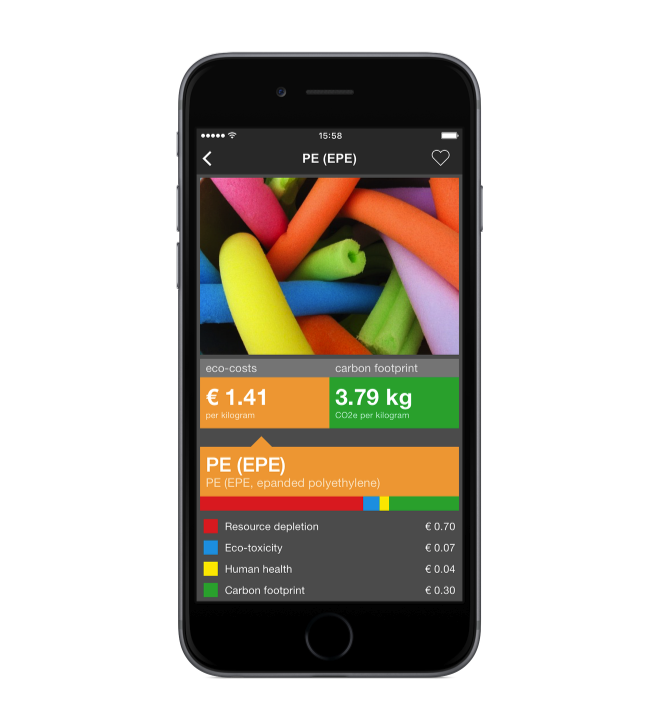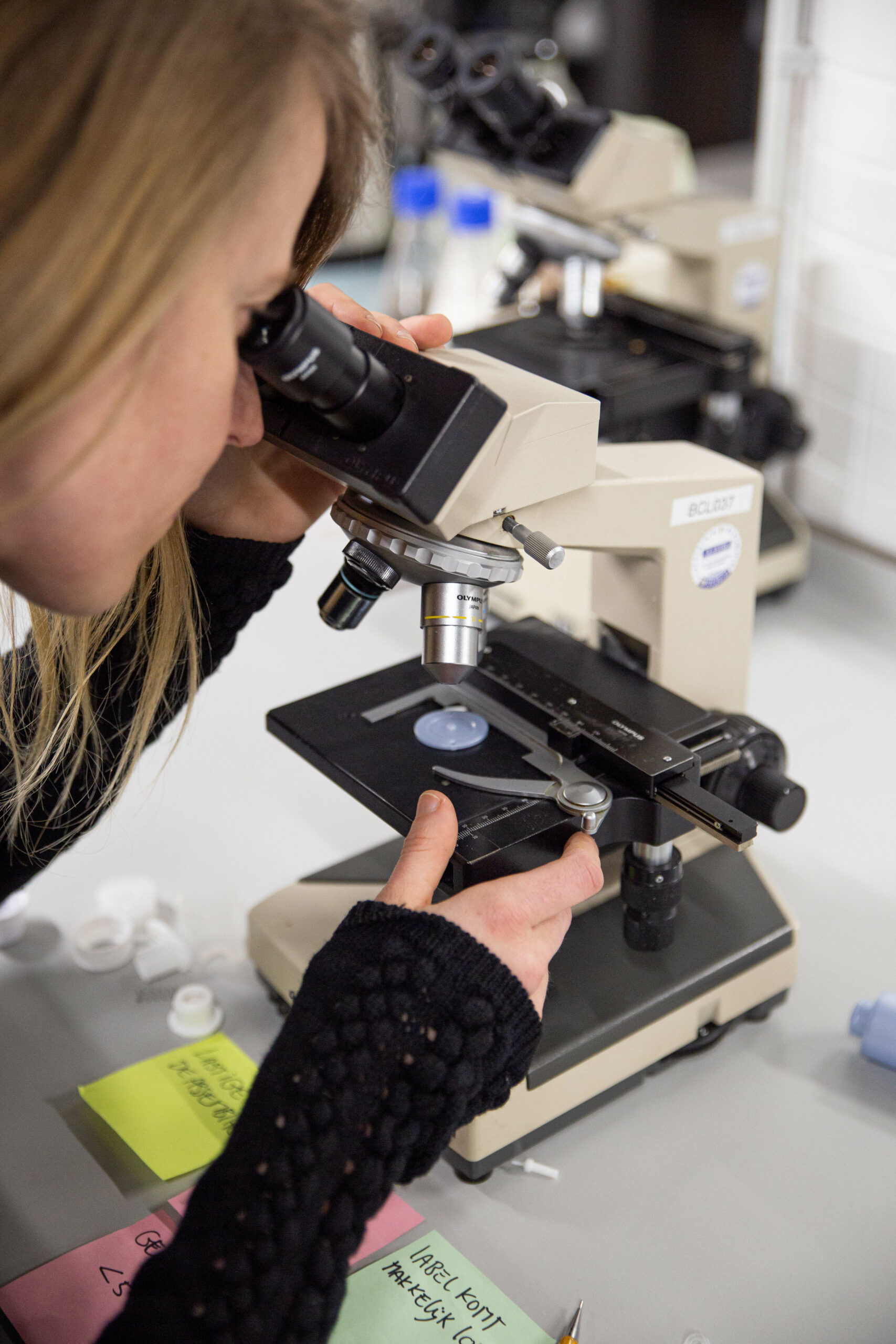Assessing Product Impact: Unveiling the Life Cycle Assessment (LCA) Process
A Life Cycle Assessment (LCA) is an essential tool for promoting the circular economy, as it evaluates the environmental impact of products and processes throughout the entire product life cycle. In our daily operations, LCA serves as a valuable tool that guides us in making well-informed decisions, ultimately leading to the creation of sustainable products and packaging.
The Life Cycle Approach

Screenshot of IDEMAT LCA database app (image source: idematapp)
Life cycle thinking is essential for understanding the full range of environmental impacts associated with a product and process. By considering all life cycle stages—from raw material extraction to production, transportation, use, and disposal—LCA provides a comprehensive view of the environmental footprint. It can also be used for a “cradle to grave” (linear economy) approach or be adapted for “cradle to gate” assessments or other variations depending on the scope of the study. The life cycle of a service can also be analysed.
Stages of Life Cycle Assessment
An LCA study consists of several stages, including:
1. Goal and scope definition
This stage involves defining the purpose of the study, system boundaries, and the functional unit (For instance, the functional unit for a beverage container could be “1 liter of beverage delivered to the consumer.”).
2. Life cycle inventory (LCI)
The LCI involves collecting data on all inputs and outputs within the system boundaries. This includes materials, energy, emissions to air, water, and land, as well as waste generation.
3. Life cycle impact assessment (LCIA)
In this stage, the potential environmental impacts of the inputs and outputs are evaluated. Common impact categories include global warming potential, stratospheric ozone layer depletion, and resource depletion.
4. Interpretation
The final stage involves analyzing the results, identifying significant findings, and making recommendations for improvement.

Laura assessing a product through the microscope.
LCA as a Tool to Prevent Greenwashing
LCA can play a crucial role in preventing greenwashing by ensuring that environmental claims are based on credible, transparent, and comprehensive data. Greenwashing occurs when companies exaggerate or misrepresent the environmental benefits of their products or services, misleading consumers and stakeholders. By conducting an LCA, companies can verify their claims with objective and scientifically-sound information, enhancing their credibility and fostering consumer trust.
Applications of LCA
Companies use LCA in many ways, such as:
1. Product development and improvement
LCA helps identify hotspots in a product’s life cycle, enabling companies to make informed decisions about material selection, production methods, and end-of-life management.
2. Environmental protection and policy-making
Policymakers use LCA to develop regulations and incentives that promote sustainable practices.
3. Consumer awareness and eco-labeling
LCA results can be communicated through eco-labels, empowering consumers to make environmentally-conscious choices.

Different materials compared and presented
How we use LCA

Photo of Packback reusable food container
An example of LCA analysis in practice is the assessment of different types of packaging (e.g. food containers). While our primary focus is on plastics, we also consider other materials that, in certain situations, may prove to be more environmentally friendly options.
For instance, we begin by comparing the life cycles of different materials, such as ceramic, plastic, and aluminum. If we identify plastic as the best option we also compare different kinds of plastics. Via this approach we help our clients identify the most environmentally friendly option and make data-driven decisions about specific packaging materials.
The Idemat database is a well-regarded resource for LCA, known for its comprehensive and reliable information for designers.
Challenges and Limitations of LCA
Despite its value, LCA has some limitations:
1. Data quality and availability
Accurate and up-to-date data is critical for LCA, but it can be challenging to obtain, especially for complex products or processes.
2. Defining scope and system boundaries
The scope of an LCA study can vary widely, making it difficult to compare results from different studies.
3. Comparability of results
Methodological choices and assumptions can influence LCA outcomes, affecting the comparability of results between different studies.

Use scenario of a reusable food container for determining scope and boundaries
Wrapping up
As a product design studio, we recognize the vital role that life cycle assessment (LCA) plays in understanding and addressing the environmental impacts of the products we create and the processes we use for this. By adopting a life cycle approach and integrating LCA into our design and engineering processes, we can help our clients develop sustainable products and foster positive environmental change.
Moreover, LCA assists in combating greenwashing by offering credible and transparent data, ensuring that the environmental claims we make on behalf of our clients are rooted in sound scientific evidence. By incorporating LCA and life cycle thinking into our design process, we strive to deliver practical and sustainable solutions for our clients.
Get in touch with us to discuss how we can work together on your next project and create a positive impact on the environment.
